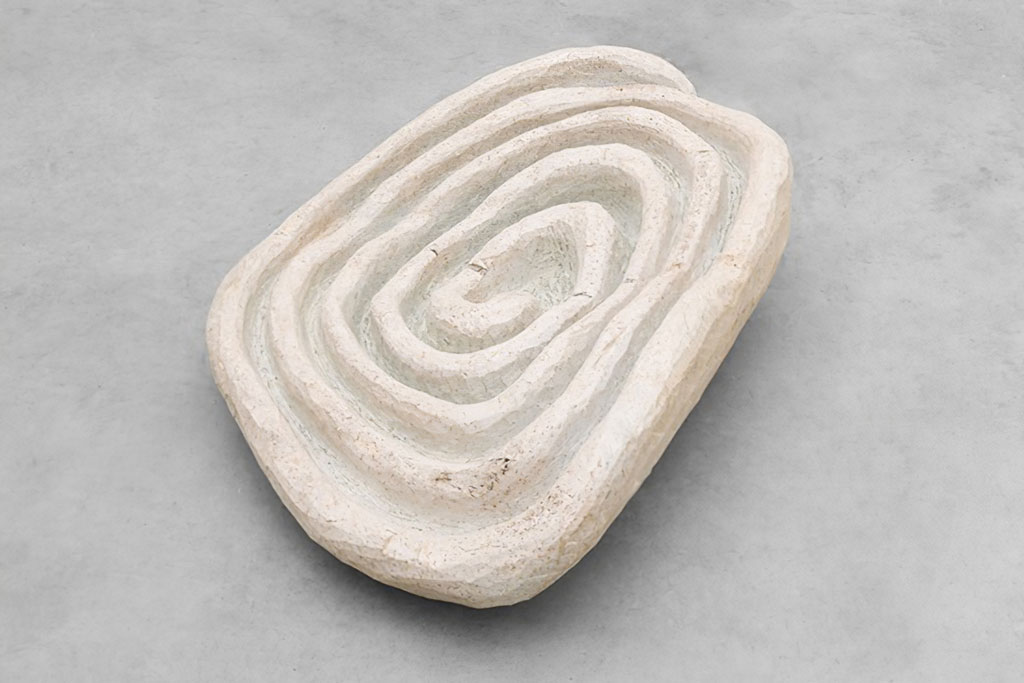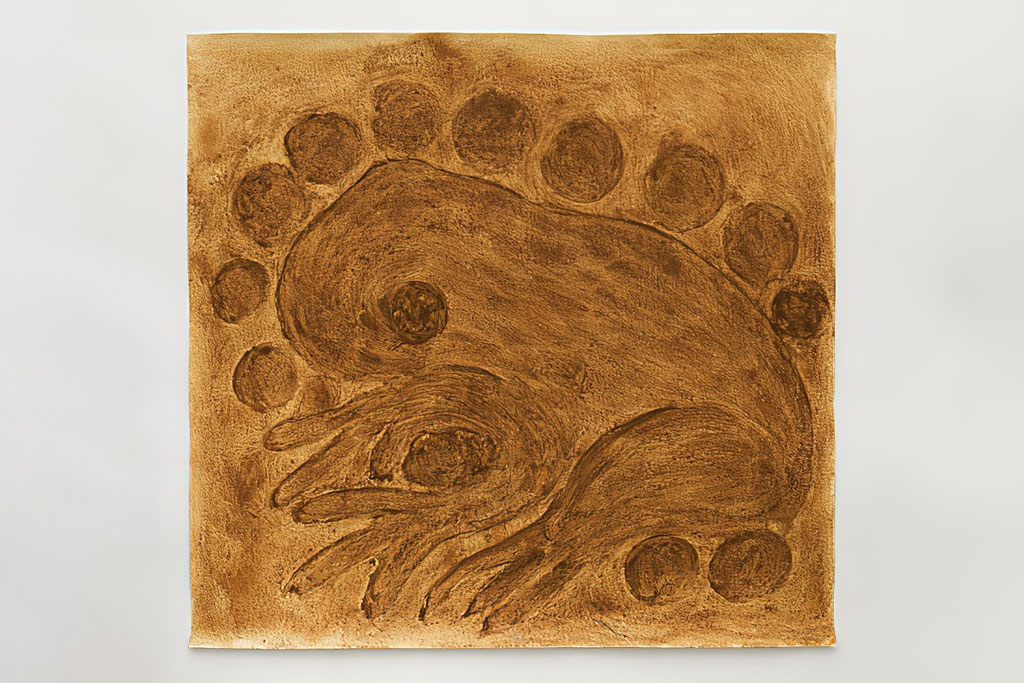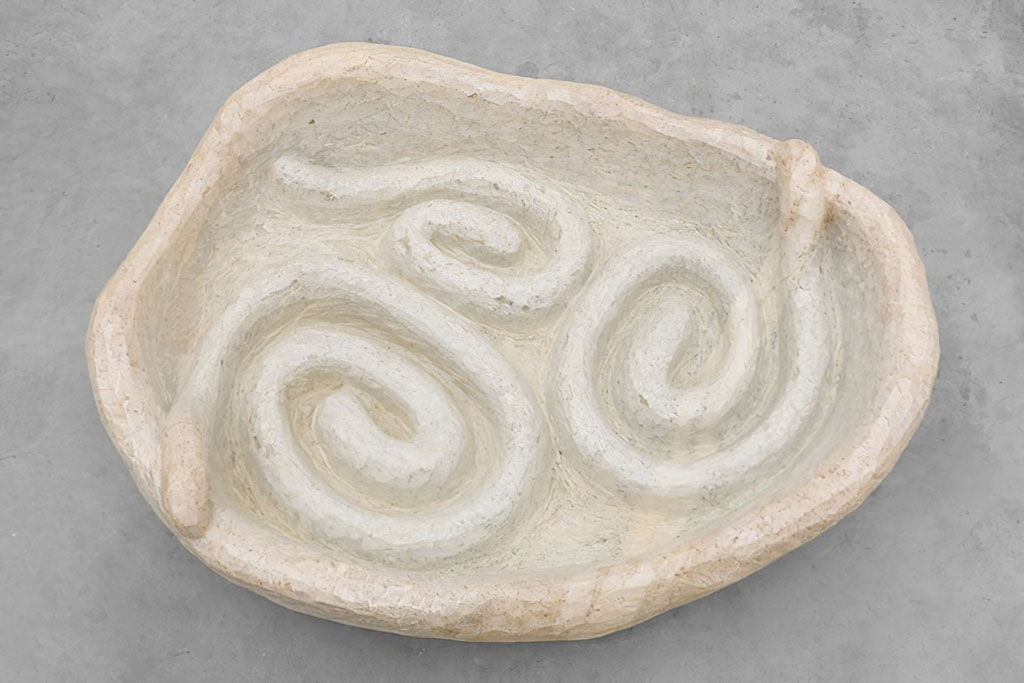ART-PRESENTATION: Solange Pessoa-Longilonge
Solange Pessoa has built a significant and internationally recognized body of work over three decades, which spans the mediums of painting, drawing, installation, sculpture, and video. Her work dialogue with, and remain in step with the Avant-Garde of the second half of the 20th Century, marking the place of her poetics in relation to the artistic practice. Notably, the interferences of the artist’s work in nature and her relationship to tropical fauna and flora.
By Efi Michalarou
Photo: Ballroom Marfa Archive
Solange Pessoa’s first solo museum exhibition in the United States includes new commissions that respond to the cultural and natural landscape in West Texas, alongside important existing pieces made in Minas Gerais, Brazil, where the artist lives and works. The title “Longilonge” refers to an invented word, found in the poetry of Carlos Drummond de Andrade. Pessoa repurposes this word to evoke a distant space or time, a longing for the unreachable, a sort of mythical place for feelings and memories, a region of temporal textures. Pessoa’s expressive and telluric art draws inspiration from myriad sources: nature, the Baroque, dreams and the unconscious, Tropicalia, prehistoric cave paintings and carved tools, Land Art, traditional craft, ancestry, Surrealism, and poetry. These and many other references lie under the surface of a fully developed lifework wrought from sustained material investigation, intuitive curiosity, and an acute command of gesture and form. Altogether 5 distinct bodies of work are presented, displaying touch-points in the arc of the artist’s work and creating a connective tissue of imagery, ideas, and relationships between two distant places in North and South America. “Untitled (Version Minas-Texas)” is a 2019 re-creation of a work she first shown in Brazil in 1994. Much like its earlier incarnation, it’s made up of many dozen bags of jute (a material similar to burlap, used to transport coffee beans), rising from floor to ceiling in the center of the room in a towering, gridlike arrangement. Each sack is filled with earth, plants, stones, seeds, pigments, or bundles of paper featuring anthropological texts and poetry. Many of the natural materials in this work were gathered locally, selected by the artist as she toured the region earlier this year and met with local experts on plants and archaeology. Pessoa also brought materials from her home region of Brazil. These local species and nonnative interlopers are spread out on the ground, around the vertically arranged bags. A series of brown-red paintings on canvas using homemade iron oxide paint, the same material used in almost all ancient rock and cave paintings. The subjects of Pessoa’s paintings here are animals, plants, and fossils, depicted in simple representational sketches. Many are identifiable as armadillo, salamander, or starfish, while others are harder to define. Ballroom’s South and Center Gallery features Pessoa’s sculptures made of feathers, bronze, hair, and clay, that might suggest to viewers wings, sexual organs, undersea organisms, and indigenous Amazonian capes and headdresses. Pessoa herself is mum about the figurative meaning of her works. “This work is just an unfolding, just a searching,” she says. “It comes from something darker—the unknown. The comprehension comes from you, the public, seeing the work and telling me”. In Ballroom Marfa’s sculpture garden Pessoa has arranged a series of untitled soapstone sculptures in the shape of bowls or hollowed rocks, some with snake or spiral-like shapes within. Pessoa carved these with the help of Afro Brazilian artisans in a quilombo** near her farm in Minas Gerais. She leverages the quilombolas’ traditional hewn carving technique, where the marks of the pick are visible, to create shapes suggesting skulls, fossils, and Bronze Age pictographs. These sculptures are intended to collect rainwater and perhaps eventually teem with life of insects and small plants. Several of these sculptures remin the ancient mortar rocks visible near the cave paintings of West Texas’s Seminole Canyon, used for grinding food and pigment.
* Carlos Drummond de Andrade, (31/10/1902-17/81987), poet, journalist, author of crônicas (a short fiction–essay genre widely cultivated in Brazil), and literary critic, considered one of the most accomplished poets of modern Brazil and a major influence on mid-20th Century Brazilian poetry. His experiments with poetic form (including laying the foundation of what later developed into concrete poetry) and his often ironic treatment of realistic themes reflect his concern with the plight of modern man, especially Brazilian urban man, in his struggle for freedom and dignity.
** The quilombo settlements established by slaves who escaped from plantations that existed in Brazil until abolition in 1888. The most famous quilombo was Palmares, an independent, self-sustaining community near Recife, established in about 1600. Palmares was massive and consisted of several settlements with a combined population of over 30,000 citizens, mostly blacks. It was the only quilombo to survive almost an entire century, with the second longest-standing quilombo in Mato Grosso lasting only 25 years.
Info: Curator: Laura Copelin, Ballroom Marfa, 108 East San Antonio Street, Marfa, Texas, Duration: 15/11/19-19/4/20, Days & Hours: Wed-Sat 10:00-18:00, Sun 10:00-15:00, www.ballroommarfa.org






